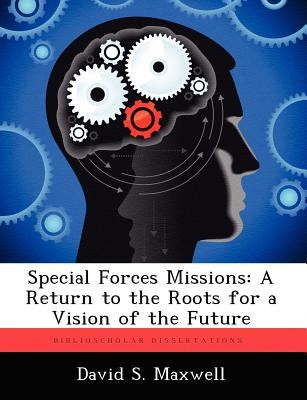
- We will send in 10–14 business days.
- Author: David S Maxwell
- Publisher: BiblioScholar
- ISBN-10: 1249270197
- ISBN-13: 9781249270195
- Format: 18.9 x 24.6 x 0.8 cm, minkšti viršeliai
- Language: English
- SAVE -10% with code: EXTRA
Reviews
Description
This study traces the development of Special Forces (SF) missions from the OSS in 1944 to the present to determine how the doctrinal missions evolved. Five specific operations/events are examined; including the Jedburghs and Operational Groups in France, Unconventional Warfare during the Korean War, Operation White Star in Laos, Special Forces conduct of the CIDG program and its participation in MACV-SOG during the Vietnam War, and SF operations in the Dominican Republic. The possible characteristics of conflict in the Post Cold War World are established. These characteristics are compared with the five historic operations examined to determine the likenesses and differences among them, as well as lessons learned that will have application for future Special Forces training. The study concludes that because the Post Cold War World will be characterized by chaos and uncertainty, SF requires the broadest training possible. It should focus on two missions and all others should become collateral activities. The wartime mission should be Unconventional Warfare and the peacetime mission should be Unconventional Operations. Training for these missions provides flexible, language capable, culturally aware, highly skilled, and disciplined soldiers that will meet the requirements across the spectrum of conflict.
EXTRA 10 % discount with code: EXTRA
The promotion ends in 23d.13:42:30
The discount code is valid when purchasing from 10 €. Discounts do not stack.
- Author: David S Maxwell
- Publisher: BiblioScholar
- ISBN-10: 1249270197
- ISBN-13: 9781249270195
- Format: 18.9 x 24.6 x 0.8 cm, minkšti viršeliai
- Language: English English
This study traces the development of Special Forces (SF) missions from the OSS in 1944 to the present to determine how the doctrinal missions evolved. Five specific operations/events are examined; including the Jedburghs and Operational Groups in France, Unconventional Warfare during the Korean War, Operation White Star in Laos, Special Forces conduct of the CIDG program and its participation in MACV-SOG during the Vietnam War, and SF operations in the Dominican Republic. The possible characteristics of conflict in the Post Cold War World are established. These characteristics are compared with the five historic operations examined to determine the likenesses and differences among them, as well as lessons learned that will have application for future Special Forces training. The study concludes that because the Post Cold War World will be characterized by chaos and uncertainty, SF requires the broadest training possible. It should focus on two missions and all others should become collateral activities. The wartime mission should be Unconventional Warfare and the peacetime mission should be Unconventional Operations. Training for these missions provides flexible, language capable, culturally aware, highly skilled, and disciplined soldiers that will meet the requirements across the spectrum of conflict.


Reviews